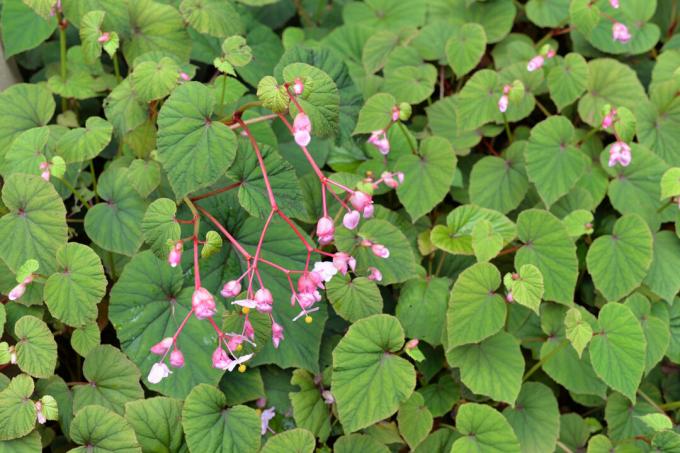Even if the begonia actually likes it warm, there are also hardy varieties that survive our winters. We present two hardy begonias.

In the summer are the exotic ones begonias (begonia) beautiful to look at. But if you don't bother to dig them up again in winter or bring the pots indoors, you start buying new plants every spring. But a few Begonia species and cultivars with a bit of luck and the right protection, they can survive the winter here too.
Are there hardy begonias?
The term "hardy" generally does not apply to begonias. They are a genus of plants that have chosen to live in the warm tropics and subtropics. At best, there is a glimpse of frost or snow on the tops of the mountains, but begonias don't go that high after all. Only very few species can cope with light frosts. Japanese slate, for example, is native to the mountainous regions west of Beijing. Temperatures there often fall below 0 °C in winter. Also the species originating from the Himalayas
Begonia panchtharensis can survive our winters well protected. There are probably still some unknown species living in the mountainous regions of Asia that could survive Central European winters. Who knows, maybe one or the other surprise awaits us in the coming years and decades?Two hardy begonia species and cultivars
The Japanese Slate is a beautiful perennial for the garden. She knows how to transform shady areas under trees or shrubs into beautiful places. With a height of 60 centimeters (in exceptional cases even 80 centimeters) it reaches an impressive height. After the winter, the begonia sprout again at the end of May so as not to be at the mercy of late frosts. The flowers also only appear late in the year from August, but then they beautify the garden well into autumn with their delicate white and pink tones. The leaves, on the other hand, are bright green on the upper side and have red veins running through them. In contrast to this is the red underside of the leaves.
The species has several subspecies and varieties:
- ‘Heron's pirouette': The 'Heron's Pirouette' variety grows between 60 and 90 cm high. It has large leaves and numerous pink flowers.
- ‘Sapporo': this variety has deep pink flowers and can reach a height of 80 cm.
- ssp. evansiana: The well-known subspecies of the Japanese slate leaf has light pink flowers and reaches a height of up to 80 cm.
- ‘Claret Jug': This variety has the brightest leaf coloring of all Japanese slate leaves and grows up to 70 cm high.
- ‘Marie': The 'Marie' variety remains small with a height of around 40 cm.
- ssp. great: The subspecies great is extremely vigorous, but does not get higher than 70 cm.
- ‘Alba': Something special is the variety 'Alba' with its pure white flowers.
- ssp. sinensis: The subspecies of Japanese slate is only about 30 cm high. It has smaller leaves but a more upright growth habit. The pink flowers appear from July.
- ‘Red Undies': This variety has a particularly intense red underside of the leaf.

the kindBegonia panchtharensis comes from the Nepalese part of the Himalaya mountains. Its leaves are shaped very differently from those of most begonias. They are deeply indented and grow up to 60 cm long. In fact, they are more reminiscent of the leaves of a giant hogweed (Heracleum mantegazzianum) than that of a begonia. However, it can be recognized as a begonia from July with its delicate pink flowers. The species is considered relatively hardy and can survive frosts down to -9 °C.
You can find more great begonia species and varieties for the garden here.
Begonias overwinter
The so-called hardy begonias also need sufficient frost protection. These species are not really hardy. A winter in Germany, Austria or Switzerland quickly gets colder than -10 °C. In order for the plants to survive the winter, they should be given a warm coat of brushwood, leaves and mulch. In autumn, the above-ground parts of the plants die off and they retreat underground. Then it's time to cover the growths thickly. In rough situations, however, even this is often not enough. Then you should dig up the plants after the first light frost and overwinter them in a pot between 3°C and 10°C indoors or in the garage.
The Japanese slate forms brood buds, so-called bulbils, in its leaf axils. These often survive the winter even if the mother plant dies. In the spring, small, young slate leaves grow wherever the bulbils have fallen. If you want to be sure that the bulbils survive, you should also collect some in autumn and overwinter in the refrigerator. Then in March you can prefer the little round buds in the house.
More information about Overwintering Begonias can be found in our special article on the subject.

